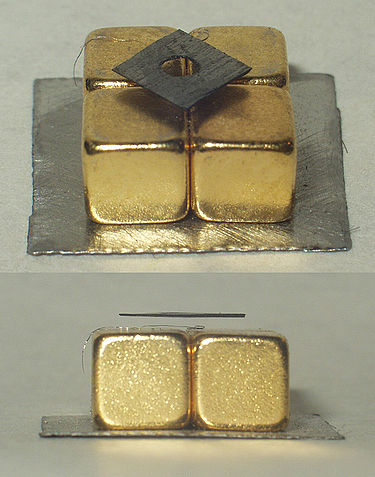Diamagnetics are materials or substances that do not possess permanent magnetic properties and repel external magnetic fields. Diamagnetism is one of the three main forms of magnetism, along with ferromagnetism and paramagnetism.
Diamagnetics belong to the class of weakly magnetic substances, meaning they create a weak magnetic field with much lower induction compared to the induction of the external magnetic field.
Diamagnetics have a small negative magnetic susceptibility coefficient, which indicates their weak response to the external magnetic field.
Diamagnetics slightly weaken the external magnetic field and are repelled by it. Their own magnetic field is directed opposite to the external field, causing them to orient perpendicular to the external field (repelled by the magnetic field).

Some examples of diamagnetic materials include copper, gold, silver, molybdenum sulfide, water, oil, and many other substances. Diamagnetics usually lack permanent magnetic polarization, meaning they do not get magnetized under the influence of an external magnetic field.
An ideal diamagnetic material has a magnetic susceptibility χ = -1, resulting in the expulsion of the magnetic field from the substance. Superconductors are ideal diamagnetics.
Diamagnetism is weak and generally not noticeable in everyday life. Diamagnetic materials usually do not leave traces on magnetic materials, which is essential for their application in technology.
The magnetic levitation effect, where a diamagnetic material is suspended in a magnetic field, can be used to create magnetic levitation systems, which have applications in high-precision technology and medicine.
Diamagnetism is also used in determining the structure of molecules and crystals through the method of nuclear magnetic resonance (NMR). This method utilizes the diamagnetic properties of nuclei in molecules and crystals to determine their structure and interactions.
In biology, diamagnetism finds application in studying the structure of biomolecules, such as proteins and nucleic acids, using NMR and electron paramagnetic resonance (EPR) methods.